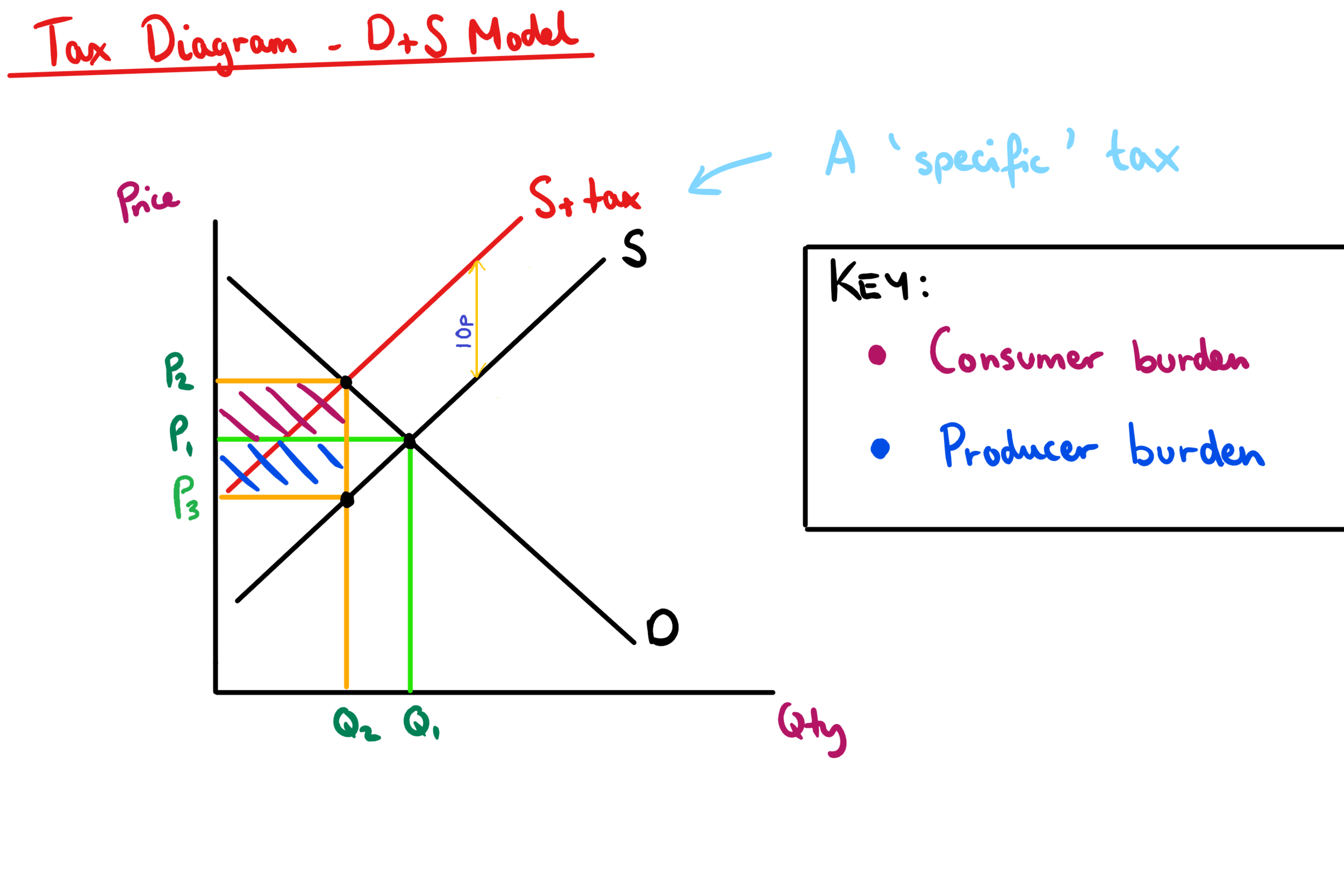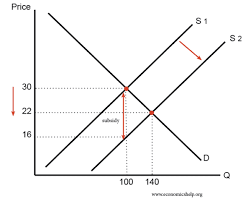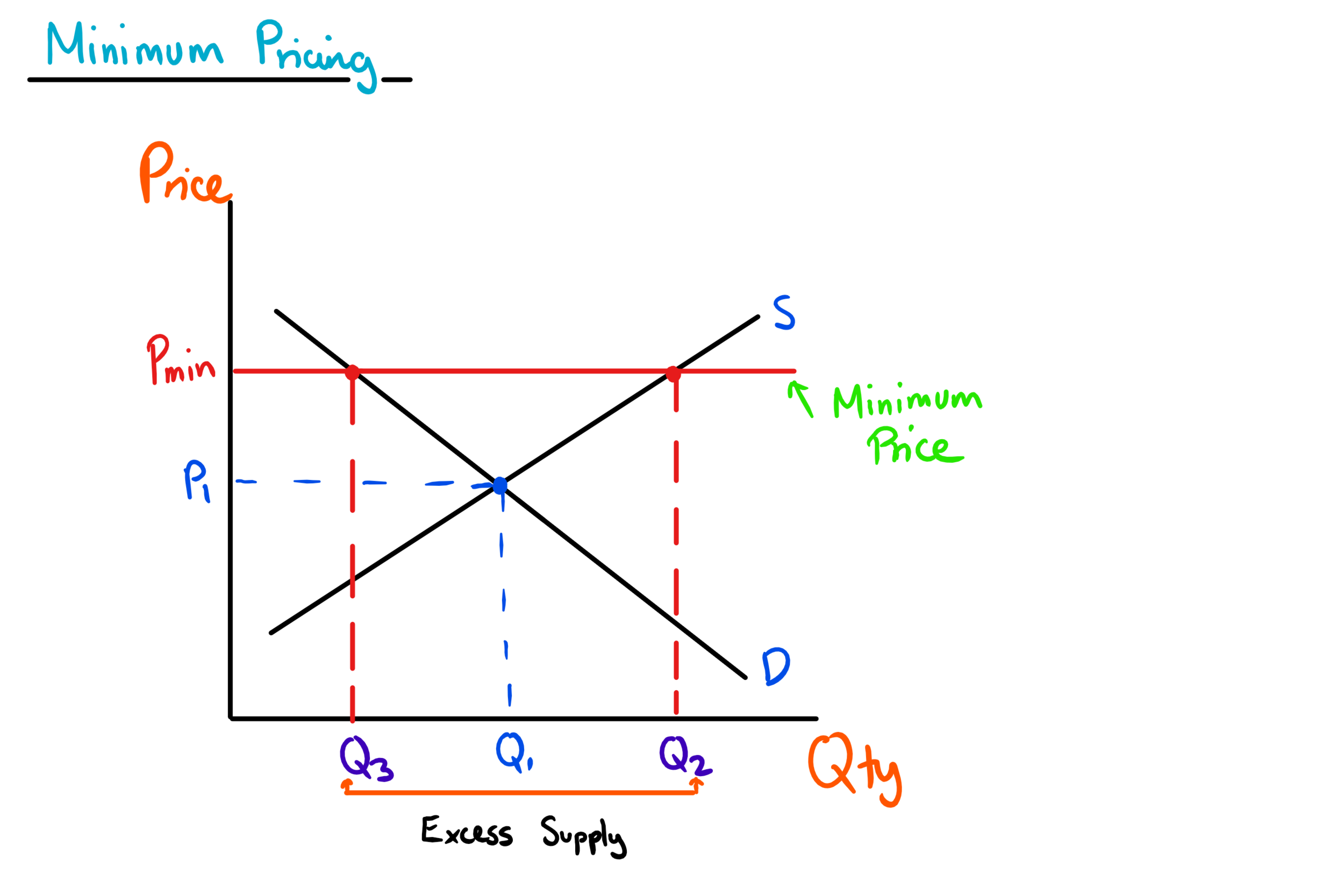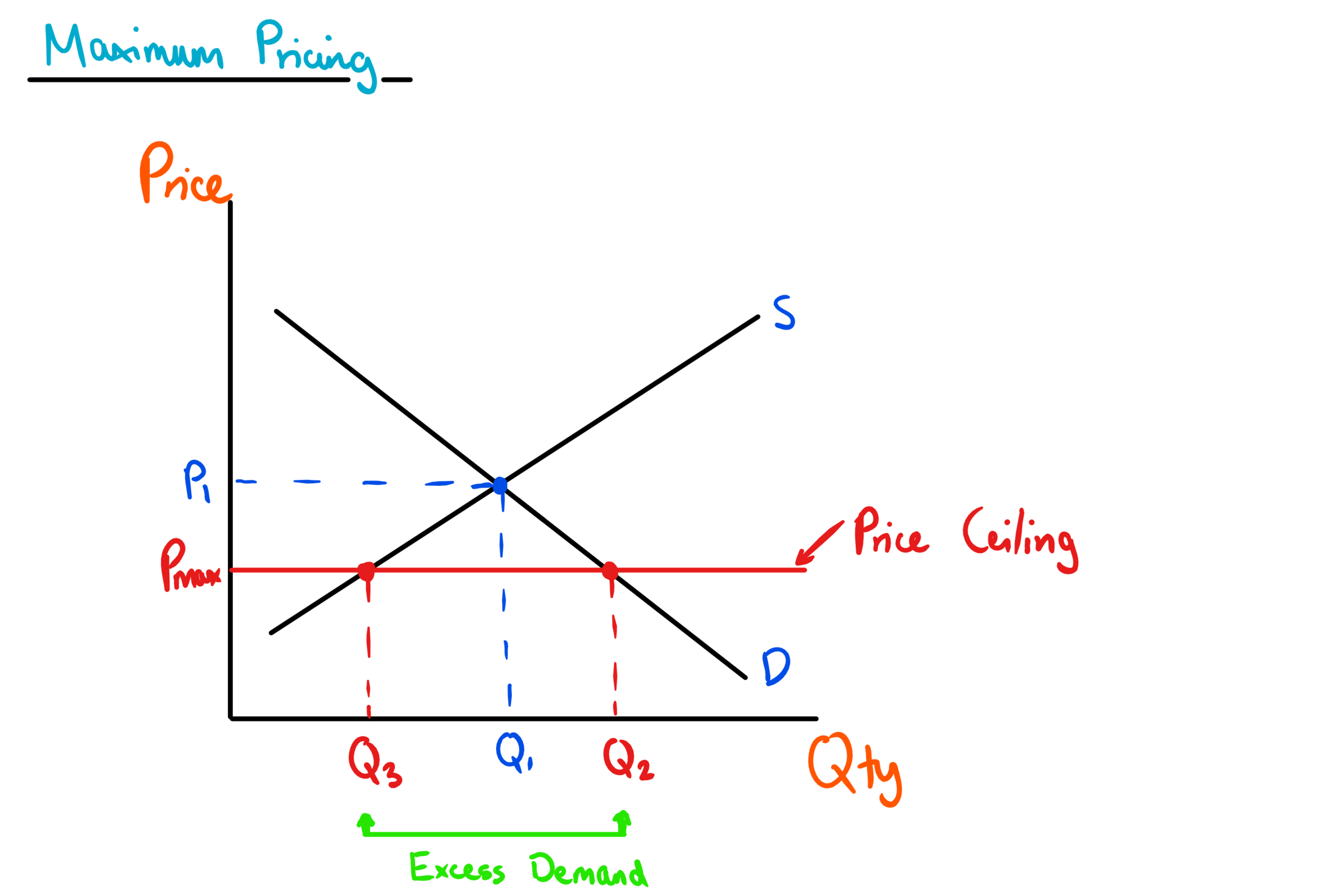Government Intervention
1/16
There's no tags or description
Looks like no tags are added yet.
Name | Mastery | Learn | Test | Matching | Spaced |
|---|
No study sessions yet.
17 Terms
Indirect Tax
A tax levied on goods or services rather than consumers or companies.
Two types of indirect tax
Ad Valorem
Tax per unit

Indirect tax
Things to mention when analyzing a graph
P&Q
Government revenue
Consumer burden
Producer burden
DWL
Deadweight Loss
Loss in the total value of trades that could’ve occurred but didn’t because sometehing interferred with the market.
PED > 1 and Tax
Consumer burden: Lower
Producer burden: higher
Government revenue: higher
PED < 1 and Tax
Consumer burden: Higher
Producer burden: Lower
Government revenue: Higher
Subsidy
Money granted to firms by the government to reduce costs of production and encourage increase in output
Deadweight loss in subsidies
Area that represents the trades that only happen because of the subsisdy, but shouldn’t from a societal point of view.

Subsidy
Minimum Price
A fixed price (price floor) enacted by the government usually set above the equilibrium.
Reasons for minimum price
Protect producers from price votality
Solve market failure
Intervention buying
When the government buys the excess supply generated by the price floor.

Price floor
Maximum Price
Doesn’t allow producers to sell at a higher price than that.
Reason for a price ceiling
To increase affordability of necessity goods/services

Price Ceiling